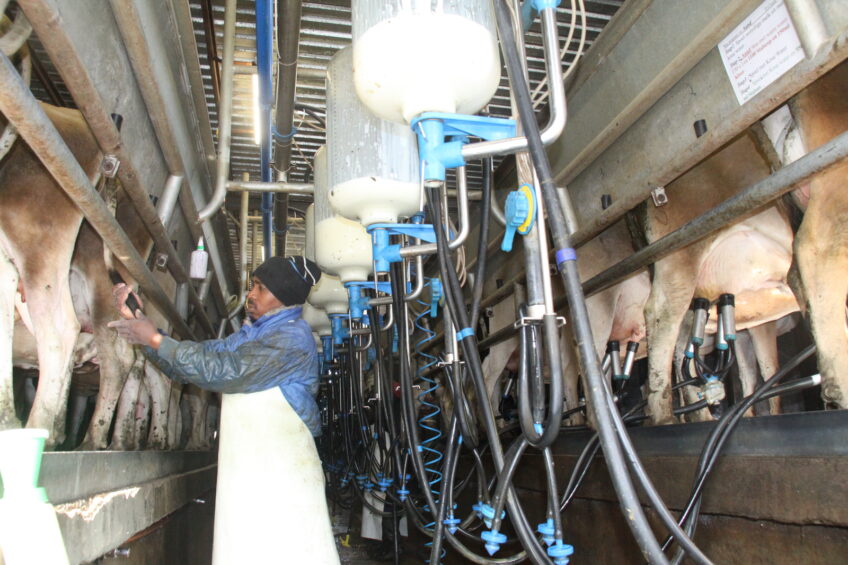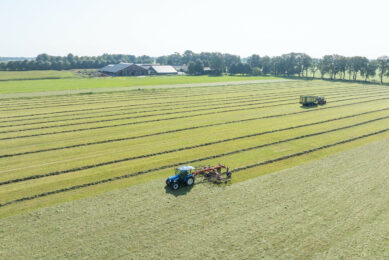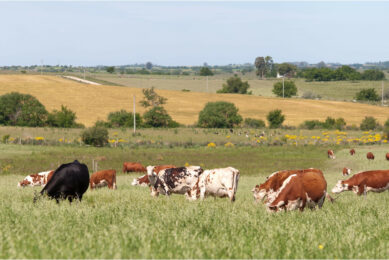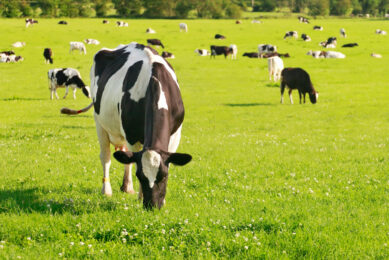Loch Lotus intensified dairy production

De Kock Cloete from Loch Lotus near Riviersonderend in South Africa’s Western Cape province farms on 2 relatively small but adjacent farms of 467ha and 530ha respectively. Having considered his land too small for economically sustainable grain production, he chose to go the dairy route instead. To maximise his turnover he expanded his dairy herd from 90 – 680 cows in milk at any time. He leases 300 of these cows. Water rights from the Sonderendriver enable him to optimise feed flow production for his cows with pastures and making silage.
Having decided to expand his dairy herd consisting of Holsteins and Jerseys, De Kock Cloete replaced his small 6-point tandem milking parlour with a 24-point swing over system at a cost of R1.35million (€90,000) in 2004. He also opted to lease some cows from 4 farmers who are either retired or decided to quit milk production because they had another source of income.
In July the price De Kock sells his milk at dropped from R5.07/litre – R4.52/litre (€0.33 – €0.30 / litre). The top 500 cows (groups A and B) are fed in a TMR or semi-TMR system, while the 180 cows that are in the process of drying up (group C) are run on pastures. The costs for concentrates have been increased by R380/t (€25.04/t) in October and costs to feed the top 2 groups amount to R3.40 – R3.80/litre (€0.22-€0.25 /litre).
Join 13,000+ subscribers
Subscribe to our newsletter to stay updated about all the need-to-know content in the dairy sector, two times a week.







































